SET Payload
Introduction | Payload Experiments | Presentation | Paper
Introduction
The SET-1 payload will be flown on the Air Force Research Laboratory (AFRL) Demonstration and Science Experiments (DSX) spacecraft. The mission is baselined for a 6000 x 12,000 km, 42 degree inclination orbit with 1 year of operations. This Medium Earth Orbit (MEO) mission will be launched on the SpaceX Falcon Heavy Rocket in June 25, 2019. Descriptions of the SET-1 payload experiments follow. For further information about DSX see the presentation and paper below.
Payload Experiments for SET-1
Cosmic Radiation Environment Dosimetry and Charging Experiment (CREDANCE)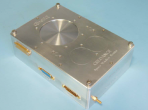
PI: Dr. Clive Dyer, QinetiQ/United Kingdom
Objectives:
- Characterize the energetic space radiation environment and its interactions with spacecraft
- Provide data to other SET-1 experiments
Goals:
- Provide data to improve radiation environment models and design tools
- Demonstrate the value of a compact space weather monitor in operational spacecraft
Measurements:
- Proton flux > 40 MeV per unit solid angle
- Charge deposition in large silicon diodes arranged in telescopes. Pulse height analysis is used to obtain ion linear energy transfer (LET) spectra of heavy ions in the 100 MeV-cm2/g to 25000 MeV-cm2/g range
- Threshold voltage shift in MOS dosimeters to measure total ionizing dose at 2 different shielding depths
- Charging current at 3 different shielding depths to provide energetic electron flux measurements at 3 energies
Dosimetry Intercomparison and Miniaturization Experiment (DIME)
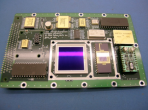
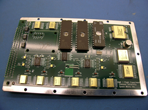
PI: Dr. Peter McNulty, Clemson University
Objectives:
- Use five different COTS microdosimeters to characterize radiation induced total ionizing dose, displacement damage, and single event effects
Goals:
- Provide data to permit appropriate dosimetry selection in future missions to characterize/resolve operational anomalies
- Validate particle transport codes by varying shielding thicknesses on RADFETs
DIME Measurements:
- Threshold voltage shift of RADFETs as a function of time to obtain total ionizing dose
- Threshold voltage shift of erasable programmable read-only memories (EPROMs) as a function of time to obtain TID
- The number of single event upsets in EPROMs to determine the upset rates as a function of the radiation level;
- The pulse height spectra of two LET spectrometers as a function of time, one to determine the LET and hence energy spectrum of protons and the other to determine the LET of heavier ions
- The visible emission spectrum of optically-stimulated luminescent films to determine very low doses.
Development of Space-Based Test Platform for the Characterization of Proton Effects and Enhanced Low Dose Rate Sensitivity (ELDRS) in Bipolar Junction Transistors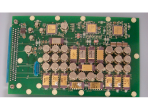
PI: Dr. Hugh Barnaby, Arizona State University
Objective:
- Measure ELDRS (primary) and proton effects (secondary) in positive-negative-positive (PNP) bipolar junction transistors (BJTs)
Goal:
- Improve understanding of the physics of ELDRS and thereby improve/validate ground test protocol for linear bipolar technologies and reduce design margins
Measurement:
- Base and collector currents for 24 COTS BJTs having different processing characteristics as a function of the emitter and gate voltages and time
COTS-2: Digital Technologies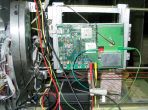
PI: Robert Ecoffet, CNES/France
Objective:
- Validate approaches to mitigate single event effects by comparing simulation techniques, performance models, and on-orbit data
- Validate mitigation of single event effects during space weather events
Goal:
- Increase reliability of COTS technologies for space applications and reduce design margins
Measurement:
- Measure single event effects on COTS FPGAs, classify the event by event type, and determine if mitigation of the effect occurred without watchdog intervention
DSX Mission/SET-1 Presentation
+ Downlaod | PDF | 9 Pages | 2.5MB
The Demonstration and Science Experiments (DSX): A Fundamental Science Research Mission Advancing Technologies that enable MEO Spaceflight
Jon Schoenberg, US Air Force Research Laboratory (AFRL),jon.schoenberg@hanscom.af.mil
Gregory Ginet, US Air Force Research Laboratory (AFRL), gregory.ginet@ll.mit.edu
Bronislaw Dichter, US Air Force Research Laboratory (AFRL), bronek.dichter@hanscom.af.mil
Michael Xapsos, NASA Goddard Space Flight Center (GSFC), michael.a.xapsos@nasa.gov
Aaron Adler, Jackson & Tull, Inc., aaron.adler@kirtland.af.mil
Mark Scherbarth, US Air Force Research Laboratory (AFRL), mark.scherbarth@kirtland.af.mil
Durand Smith, Sequoia Technologies, Inc., durand.smith@sequoia-tech.com
+ Download | PDF | 13 Pages | 2.1MB




